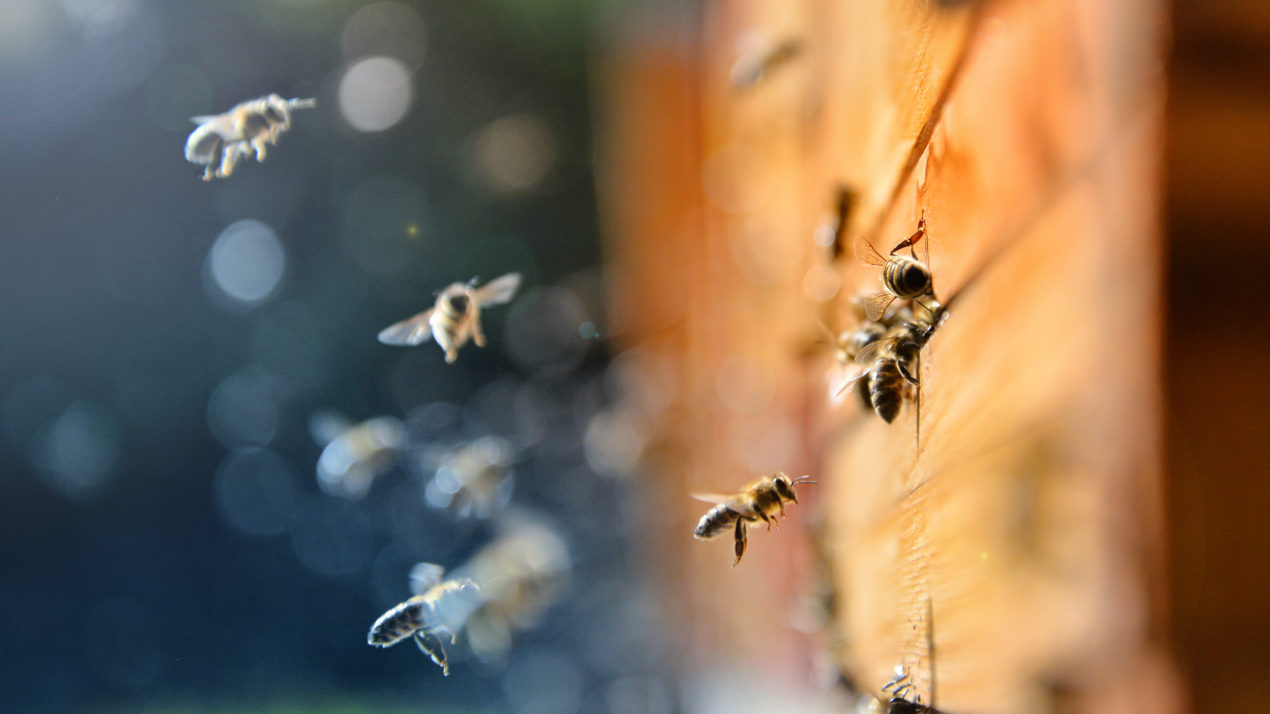
They become the star attraction at this time of year — bees!
Located in southeastern Sullivan, Wisconsin is Heritage Honeybee. It is the nation’s largest distributor of bees. Owner Tim Wilbanks moves bee colonies and queen bees from northern California and southeastern Georgia to a seven-state region around the Great Lakes. Tim is about halfway through his season even though the recent cool weather doesn’t suggest that it’s time for spring. But he says cooler temperatures don’t really impact bee distribution.
The change in temperature from Georgia or California to Wisconsin doesn’t bother the bees too much, it just prevents them from foraging outside of their hive. The bees cluster to stay warm in their hive if it’s under 50 degrees. Beekeepers need to make sure bees have enough food in their hive if it’s too cold for the bees to forage.
The surplus of bees in warmer states that feeds the demand for bees from the Upper Midwest’s beekeepers. Wilbanks says demand has been growing for bees in Wisconsin. The Badger State has a large population of beekeepers, especially in the southeastern part of the state. But it’s hard for those beekeepers to keep bees over the harsh winter — honeybees are not native to North America — which is why they need more supply in the spring.
Wilbanks says folks are usually surprised by the number of bees getting moved around. Earlier this month, he had over 3,000 packages of bees come to his warehouse over two days. Each one of those packages has 10,000 bees in it. That’s a LARGE number of honey bees being moved around in just one weekend of the 6-week bee moving season.
He adds that his family takes pride in being a generational business that has a positive impact on pollination, honey production and enjoyable backyard hobbies for Midwesterners.

